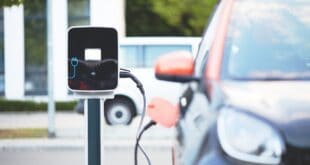Getting or building a wind power generator for home use is quickly becoming an attractive option for many environmentally conscious homeowners. Alternative energy sources are looking quite feasible in helping to alleviate both environmental damage and fuel shortage related to the use of fossil fuels. If we manage to develop these budding fields properly, we may eventually wean ourselves off of our reliance on coal, oil, and gas. This will not only stabilize our power generation, but also result in many benefits to the environment as we use renewable, green ways of making energy. Thus, the need for a wind power generator for home use.
These electricity generators are becoming more and more commonplace as people install more of them both on large and small scales. They are machines that can convert the natural breeze-induced mechanical movements into electricity. Thus, they only need this force of nature to produce energy, which is free, essentially unlimited or renewable, and all natural. This basic concept of harnessing the energy all around us is what lies behind any good renewable energy source.
Some background on the concept behind using a wind power generator for home use would be useful to have. Generators work by transforming physical motion, usually rotation, into electricity using strong permanent magnets. Turbines then work on the same essential principle, using natural flows to turn blades, which then produce electricity in conjunction with magnets. Both direct and alternating current may be produced by generators (for AC, the term used is usually alternator instead of generator, but the concept is basically the same). The electricity produced can then be wired to devices for immediate usage, stored in batteries, or even wired back into the power grid for other users.
Most renewable energy sources require a higher capital outlay than conventional fossil fuel power generation. This is because the technology for these new energy sources is much younger and less understood and developed than the older technologies. However, as interest in these sources continues, technological and engineering developments should make costs more manageable. In fact, at present, many systems are already being made available for residential use. This is why it is relatively easy to get your hands on a homemade windmill/turbine.
Of course, harnessing the breeze would not necessarily be efficient for every single home and location. There needs to be, first and foremost, enough available space for the turbine. The amount of space and clearance required varies from setup to setup: some can be mounted on roofs while others need freestanding towers. Remember that the strength of this force of nature would also not be constant throughout the year, meaning other sources must also be used. Getting a wind power generator for home use is still a great, green idea, however.
 Alternative Energy HQ solar power for homes, wind energy, and bio fuel issues
Alternative Energy HQ solar power for homes, wind energy, and bio fuel issues







